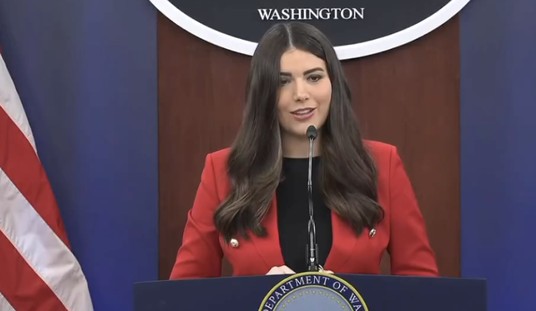Tuesday's elections produced something of a mixed bag for conservatives, with Republicans fairly sweeping two important but 'safe' special Congressional contests in Florida, and a leftist winning the much-watched Wisconsin Supreme Court race. The most realistic 'best case' scenario for Republicans would have been winning the two Sunshine State specials by close-to-Trumplike margins, while also flipping the Badger State high court to a 4-3 constitutionalist majority. For Democrats, it would have been making the GOP really sweat it out in Florida's 6th Congressional District, while winning the Wisconsin race. Democrats came closer to their preferred scenario but still fell short. Let's start with the Congressional battles, which will have the most immediate and obvious impact:
(1) Republicans won, the calls were early, and the margins were not close. On one hand, this isn't really much to crow about, as both seats are in 'safe R' territory. Trump carried FL-01 by 37 percentage points, 68 percent to 31 percent over Kamala Harris. The president won FL-06 by 30 points, 64 percent to 34 percent. In his 2022 romp, Gov. Ron DeSantis won each district by even greater margins. In other words, Democrats shouldn't have even sniffed victory in either of these special elections. On the other hand, Democrats didn't didn't sniff victory. Yes, it was closer, as Republican voters tend to participate less frequently and less reliably in lower-profile elections, but it was not close. DecisionDeskHQ called each contest within minutes of polls closing, as heavily red Election Day votes swamped Democrats' early voting. The result was double-digit wins in both districts.
The GOP had been expressing alarm recently about FL-06 falling into single-digit or even margin-of-error territories with a weak candidate (who campaigned little and got massively out-raised and outspent) stagnating. Those alarm bells evidently resonated with Republican voters, who turned out in substantial numbers on Tuesday itself, easily securing the victory by around 14 percentage points. That's half of Trump's margin, mind you. But turnout was also way down. When Michael Waltz, now Trump's National Security Adviser, won re-election here last year, he pulled in more than 284,000 votes. His newly-elected replacement, Randy Fine, didn't crack 111,000 tallies. Democrats turned out at a much higher rate in this race, hitting 58 percent of their 2024 vote total in FL-06, compared to Republicans' 39 percent.
Recommended
By contrast, Florida Republicans were saying that they felt good about FL-01, with a strong candidate running in a scarlet red district. They were right to be confident, but conservative voters also seem to have internalized the lack of urgency, and turnout reflected that. The final margin was 15 percentage points, way down from previous gaps in recent presidential and midterm cycles. Freshly-elected Republican Congressman Jimmy Patronis didn't even hit 100,000 votes, barely over a third of his predecessor's vote total haul from 2024. The Democrat in the race maintained 59 percent of her vote total from last November (when she ran unsuccessfully for the seat). The final upshot in these two specials was roughly the same: The districts were too Republican for Democrats to have any shot, but Republican turnout was weak -- and notably relatively weak, compared to Democratic turnout. But when one of the races was looking too close for comfort, enough GOP voters were sufficiently moved to get off the couch and show up, locking down a heavily-slanted victory. Democratic energy is sky-high; Republican energy is less so.
The pattern continues: Democrats are the high-propensity turnout party, showing up for elections big and small. Republicans are the low-propensity party, who will underperform and lose in many lower-profile races as a result.
(2) The House majority grows. This pair of GOP wins grows the party's tiny House majority, which impacts the party's agenda moving forward. Speaker Mike Johnson had so little wiggle room (he's been unable to lose more than one vote on key measures this year), and was sweating whip counts so much, that Rep. Elise Stefanik's nomination for UN Ambassador was withdrawn. Part of that thinking may have been related to Republican voters not participating at robust levels in special elections, and Stefanik's district is less reliably and deeply red than the vacated Florida seats. Regardless, Johnson now has a bigger cushion, although it's still historically small. But every vote counts in the House, and now Republicans have more of them:
Two Trump-backed Republicans won special congressional elections in Florida on Tuesday, according to The Associated Press, shoring up their party’s slim majority in the House at a crucial moment for President Trump’s domestic agenda...Both seats had been expected to remain in Republican hands, though some private polls showed Mr. Fine facing a close contest against Josh Weil, his Democratic opponent. Mr. Weil and Gay Valimont, the Democrat who ran against Mr. Patronis, each raised millions of dollars for their campaigns despite the Democrats’ struggles in Florida...With control of the House teetering, restoring Republican votes for the two vacant seats will be important as the party navigates internal divisions over a domestic policy package, which is expected to include significant cuts to spending and taxes. Democrats are expected to unanimously oppose the plan, meaning that House Republicans can barely spare any votes...With the outcomes of the two races on Tuesday, there will now be 220 Republicans and 213 Democrats in the chamber, with two vacancies still to be filled in Arizona and Texas.
The math is still very tricky for Congressional Republicans, but now it's a touch less hard, which matters.
(3) Conservatives got crushed in the important Wisconsin Supreme Court race. Back in 2023, 'progressives' won control of this court, flipping the ideological majority to 4-3 in their direction. That race featured a lackluster conservative candidate who got vastly outspent. The leftist won by ten percentage points (55-45), with a turnout of around 1.9 million voters. This time around, with much more fanfare, a better conservative candidate, and record-setting spending on both sides, the leftist emerged victorious...by an identical ten-percentage-point margin (55-45). Turnout surged dramatically, to north of 2.3 million. Conservative Brad Schimel improved on the 2023 right-leaning candidate's vote total by close to a quarter of a million, and still lost by ten points because leftist Susan Crawford improved on her side's vote total by a similar amount. Democrats were motivated by Trump, Elon Musk, and abortion. They turned out massively, even with conservative raw turnout numbers also up significantly. A bigger overall turnout looked like Schimel's only chance to overcome a major early vote lead built up by Democrats. In the end, it didn't matter. Much larger turnout than 2023, virtually identical result.
One other point of comparison: More than 3.4 million Wisconsinites voted in the presidential race last year. Crawford won a staggering 78 percent of Kamala Harri's 2024 vote total; Schimel won about 62 percent of Trump's vote total in the state. That's a strong number from Schimel, frankly, especially as compared to the dismal percentages won by the Florida House candidates mentioned above. But Democrats blew it out. Crawford came close to hitting Hillary Clinton's 2016 raw vote total in Wisconsin last night. This was base mobilization on a mass scale, plus pulling over swing and undecided voters. If Democrats can replicate this sort of performance in the midterms -- which is a huge if because the political environment is unknowable and it's a different category of elections -- they'll be in a strong position to pull off a blue wave. I'll leave you with a fairly significant silver lining out of Badgerland. This enjoyed supermajority passage with 63 percent of voters in support:
The ballot initiative to enshrine voter ID requirements in the Wisconsin Constitution will pass overwhelmingly.
— Yashar Ali 🐘 (@yashar) April 2, 2025
This means that there are voters who voted for the voter ID measure and voted against the Republicans’ choice for the Supreme Court. https://t.co/F7ha6slsfK
Honestly, work to get voter ID constitutional enshrinements on the ballot in as many states as possible https://t.co/PI3M9AbcYV
— Guy Benson (@guypbenson) April 2, 2025
Editor's Note: Every single day, here at Townhall, we will stand up and FIGHT, FIGHT, FIGHT against the radical left and deliver the conservative reporting our readers deserve.
Help us continue to tell the truth about the Trump administration and its successes. Join Townhall VIP and use promo code FIGHT to get 60% off your membership.
























Join the conversation as a VIP Member